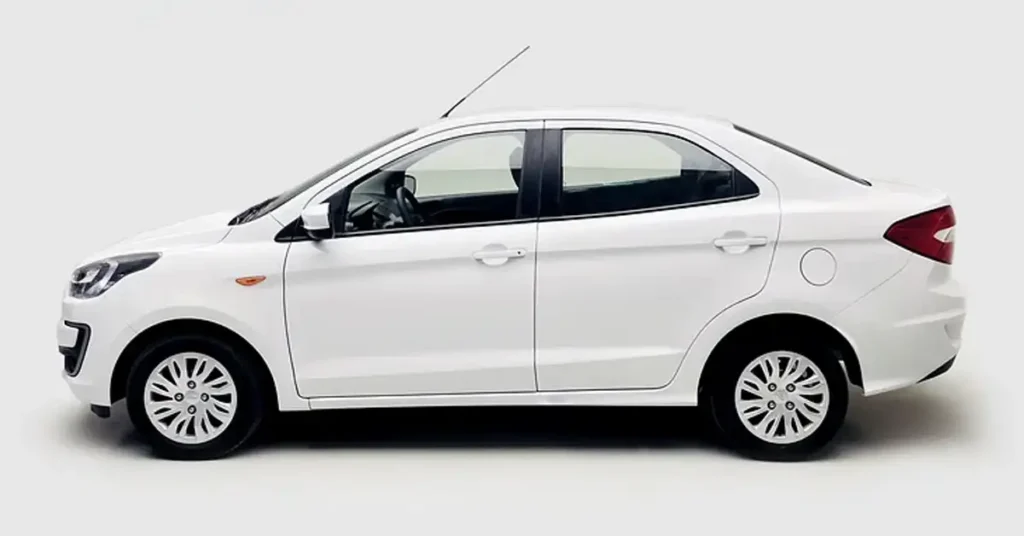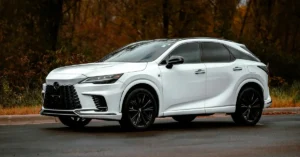A Small Car With Big Questions
The Ford Figo has always been one of those cars that promises more than its size suggests. It was marketed as an affordable hatchback that still brought driving fun, a solid build, and engines that felt lively in daily traffic. In places like India, the Figo became popular with younger buyers and families looking for a budget-friendly, no-nonsense option. In the Middle East, it offered a compact alternative for city driving where space and parking are always at a premium.
But if you dig into real-world ownership stories, the Figo leaves people split. On one side are the drivers who love its sharp handling, responsive steering, and decent fuel economy. On the other are those frustrated with higher servicing bills, availability of parts, and unexpected reliability quirks.
So is the Ford Figo petrol a smart buy today, especially if you are looking at used models? Let’s dive into the reputation, common problems, and what you should know before deciding.
Reputation and Ownership Insights
When Ford introduced the Figo, it was aimed at buyers who didn’t just want basic A-to-B transport. It had the kind of steering and braking feel that reminded people of bigger, more expensive Ford models. The petrol variants, in particular, stood out for being responsive in city traffic, giving drivers a sense of control that many rivals lacked.
That said, the ownership experience is where things become uneven. Many drivers appreciate the car’s stability on highways and the confidence it inspires on bends. But owner surveys and forum discussions consistently raise three points:
- Servicing costs are higher than expected for a budget hatchback.
- Spare parts availability can be inconsistent, especially since Ford reduced its presence in some regions.
- Warranty coverage is shorter compared to rivals that offer five or seven years.
This means that while some owners feel they got a spirited, value-packed car, others end up paying more over time than they anticipated.
Servicing Costs and Running Expenses
On paper, the Figo petrol seems like a durable hatchback. The engines are robust, and with regular oil changes and maintenance, they can clock serious mileage. However, the cost of keeping one running is where buyers get caught off guard.
Authorized Ford workshops usually charge more for labor and parts compared to competitors like Hyundai or Maruti Suzuki. A full scheduled service can cost noticeably higher, eating into the car’s budget-friendly promise.
Some owners shift to trusted independent garages to keep costs down, which can help as long as genuine parts are sourced. The trade-off is between peace of mind with authorized servicing and lower bills with independents. For used buyers, it is important to check service history and confirm whether the car was maintained regularly, regardless of where.
Common Problems and Fixes
Here’s where things get practical. If you are buying or owning a Ford Figo petrol, these are the issues most frequently reported, along with ways to deal with them.
Hard Starting or Stalling
Some Figo petrol models develop starting troubles, especially in humid or very hot weather. Owners describe hesitation in the mornings or the engine stalling at traffic lights. Not only is this inconvenient, but it can also feel unsafe in traffic. This usually points to faulty sensors or clogged injectors. Regular injector cleaning and timely sensor replacements generally solve the problem.
Air Conditioning Weakness
Perhaps the most frustrating issue in warmer markets is the Figo’s air conditioning. Owners complain of weak cooling during peak summer, which is especially problematic in places like the UAE where temperatures soar. The AC compressor and condenser are common failure points. Replacing faulty parts and keeping up with gas refills typically restores performance, but this is one area you want to test carefully before buying.
Electrical Glitches
Power windows that stop working, warning lights that flicker, and infotainment systems that freeze up are among the smaller but irritating faults. Many of these come down to wiring harness issues or poor battery grounding. A proper rewiring job and a fresh battery usually bring things back to normal.
Suspension Wear
Rough roads or frequent speed breakers seem to speed up suspension wear on the Figo. Premature bush and shock absorber damage leads to a bumpier ride and uneven tire wear. Upgraded bushings and timely replacements go a long way in keeping the ride comfortable.
Clutch and Gearbox Complaints
Manual Figo petrols sometimes develop heavy clutch pedals and jerky gearshifts. This makes city traffic driving more tiring and can be a sign of transmission wear. Most owners fix this with a clutch replacement or gearbox servicing. Some even opt for heavy-duty clutch kits for better long-term reliability.
Best and Worst Years to Buy
Not all Figos are created equal. If you are in the market for a used one, knowing which years are safer bets helps.
- Later models from 2017 to 2020 are generally considered the most reliable, thanks to updated electronics and fewer mechanical complaints.
- Early models from 2010 to 2013 should be approached with caution, as they had recurring problems with air conditioning and electricals.
Comparison with Rivals
The Figo is fun to drive, but competitors often deliver better long-term ownership satisfaction.
- The Hyundai i20 scores high on reliability and resale value, though it costs more upfront.
- The Maruti Swift is cheap to run, easy to maintain, and holds resale value well, though it feels lighter on highways.
- The Honda Jazz offers more space and a bulletproof petrol engine, but it consumes slightly more fuel.
- The Volkswagen Polo feels as solid and enjoyable to drive as the Figo but brings high repair costs.
This puts the Figo in an interesting spot. It delivers a lively drive but loses ground when measured by servicing costs and after-sales support.
Buyer’s Guide Checklist
Before you sign the deal on a Ford Figo petrol, here’s what you should do:
- Inspect suspension parts, AC performance, and all electricals in detail.
- Take a test drive at different speeds, including highway runs at 100–120 km/h, to check gearshifts, braking, and stability.
- Review the service records carefully. Make sure clutch, injector, and AC issues have been addressed.
- Avoid early models unless they come with complete service documentation.
- Always invest in a professional OBD II diagnostic scan before purchase.
UAE-Specific Considerations
For UAE buyers, the Ford Figo requires extra attention because of the climate and conditions.
- The air conditioning system needs to be in top shape, or summers will be unbearable.
- Dust and sand can clog filters and wear out suspension parts faster.
- Humidity near coastal areas speeds up corrosion on connectors and condensers.
- Resale value is moderate, with Japanese rivals generally holding demand better.
If you are buying in Dubai, Abu Dhabi, or Sharjah, it pays to be extra thorough in your inspection.
FAQs
Is the Ford Figo petrol reliable?
Yes, but it has quirks. Later models are stronger, but maintenance discipline is key.
What are the most common problems?
Air conditioning issues, electrical glitches, and suspension wear top the list.
How much does servicing cost?
Authorized servicing is pricier than rivals, though independent garages help cut costs.
Which year is best to buy?
2017–2020 models are generally the safest picks.
Is the Figo good for UAE roads?
Yes for city driving, but AC and suspension weaknesses stand out more in UAE conditions.
Conclusion: Should You Buy a Ford Figo Petrol?
The Ford Figo petrol is proof that small cars can be fun to drive. It handles confidently, feels planted at speed, and brings a touch of character that many hatchbacks lack. But it is not a hassle-free experience. Higher servicing bills, AC complaints, and electrical quirks mean you need to go in with eyes open.
For buyers who want engaging driving and don’t mind keeping up with regular maintenance, it still makes sense. But if you prefer the most stress-free option with strong resale, cars like the Swift or i20 may serve you better.
Make a Smart Hatchback Choice
If you are considering a Ford Figo in the UAE, don’t skip a thorough AC and suspension check. The local climate puts extra pressure on these systems, and fixing them after purchase can be costly. At MotorHub, we connect you with trusted inspection services and reliable workshops that help you make an informed choice. Whether it’s a Figo or any other hatchback, a smart pre-purchase inspection can save you thousands and ensure your next car delivers real value on UAE roads.



